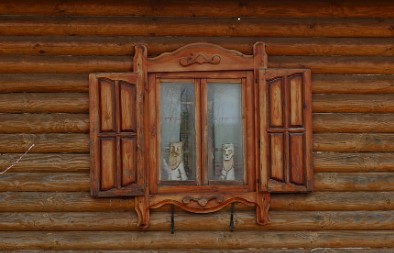Contents
Living in Canada comes with its distinct set of climatic challenges. If you’re looking to spruce up your home or are on the brink of constructing a new one, you must ask yourself a simple question about which material is best suited for a window frame.
Vinyl windows, for example, have excellent moisture resistance, ensuring that they do not rot, rust, or corrode — a significant advantage in areas with heavy rainfall. Wood window frame has been used as a traditional material for centuries.
Aluminium is a lightweight yet robust material, boasting a strength-to-weight ratio superior to that of vinyl or wood. Fibreglass frames are known for their dimensional stability.
Understanding Canada’s Climate
Canada boasts a massive geographical footprint. From the frosty Arctic terrains to the more temperate coastal regions, it experiences a wide temperature spectrum. Summers can be pleasantly warm, while winters can be brutally cold, especially in certain regions.
Impact on home infrastructure
Canada’s unique weather conditions do leave a mark on our homes. From roofs to basements, and importantly, our windows.
- Expansion and contraction — the frequent temperature fluctuations can lead to materials expanding and contracting, affecting their longevity;
- Aesthetic wear and tear — apart from structural issues, there’s the challenge of maintaining the aesthetic appeal amid the harsh weather conditions.
Why Frame Material Matters
Choosing the right material for your window frames isn’t a decision to be taken lightly. It’s not just about aesthetics.
It’s an essential factor that can directly impact both the functionality and longevity of your windows.
Firstly, let’s consider durability. In a country like Canada, where the climate varies dramatically from region to region, the material of your window frames needs to withstand everything from intense cold snaps to sweltering heatwaves.
While one material might thrive in a wetter, coastal area, it may not fare as well in a location known for its freezing temperatures.
Next, we have the question of maintenance. How much effort are you prepared to invest in looking after your windows? Some materials may look pristine for years with minimal upkeep, while others might demand regular attention to remain in top condition.
Another critical factor
With ever-increasing energy prices, homeowners are keenly aware of the benefits of insulation. A window frame material that offers superior insulation will not only keep your home comfortable but can also lead to significant savings on your energy bills over time.
Lastly, there’s the economic aspect. While some materials might seem more cost-effective initially, potential long-term maintenance costs or the need for early replacement can make them less so in the long run.
In essence, the material you choose for your window frames plays a pivotal role in the overall comfort, efficiency, and aesthetic appeal of your home. Whether you lean towards the natural charm of a wood window frame or the modern appeal of aluminium, understanding the importance of material selection is the first step to making an informed choice.
The Popularity of Wood Window Frame
There’s something timelessly appealing about wood.
When it comes to window frames:
- Natural insulation — wood’s natural properties make it an excellent insulator;
- Aesthetic charm — the grain patterns and the warm appearance of a wood window frame can enhance any architectural style.
Wood provides not just insulation but also adds a touch of classic beauty to homes.
Potential drawbacks
Wood demands love. It needs regular staining or painting to prevent damage. Upfront costs for wood can be higher compared to synthetic materials.
Alternatives to Wood Window Frame
While the timeless charm of wood is undeniable, it’s essential to recognise that it’s not the only player in the game. With advancements in technology and manufacturing, a variety of alternative materials have emerged, each with its unique set of advantages.
From the economic allure of vinyl to the sturdy nature of aluminium and the innovative capabilities of fibreglass, there’s a range of options that might suit different needs and preferences. So, if you’re contemplating a departure from the traditional wood window frame, or simply wish to weigh all your options, read on to discover what’s on offer.
Vinyl frames
- Economical — typically cheaper than wood;
- Low Maintenance — vinyl doesn’t rot or require painting;
- Insulation — offers decent insulation but might fall short of wood’s capabilities.
Aluminium frames
- Sturdy — aluminium is robust and long-lasting;
- Style — it offers a modern, sleek appearance;
- Insulation — its insulation properties are inferior to wood.
Fibreglass frames
- Durable — fibreglass is robust and resistant to wear and tear;
- Look-alike — an mimic wood’s appearance without the associated maintenance;
- Insulation — comparable to wood in terms of insulating properties.
Assessing Long-term Benefits
- Longevity — with regular care, a wood window frame can stand the test of time;
- Energy efficiency — over the years, the energy savings you accrue can make the initial cost worthwhile.
Considering costs
- Wood — frame can be pricey initially but consider long-term benefits like reduced energy bills;
- Synthetics — materials like vinyl or aluminium might be lighter on the wallet during purchase but might not offer the same long-term advantages.
Evaluating aesthetic appeal
Traditional vs. Modern
While wood offers a timeless look, materials like aluminium can lend a contemporary touch.
Home Design
Consider the overall aesthetic of your home. A quaint cottage might look best with wood, while a modern loft might shine with aluminium frames.
Conclusion
In the quest for the perfect window frame for Canada’s fluctuating climate, while wood window frames stand out as a commendable option, it’s pivotal to assess all aspects, from costs to aesthetics, before making your final pick.
